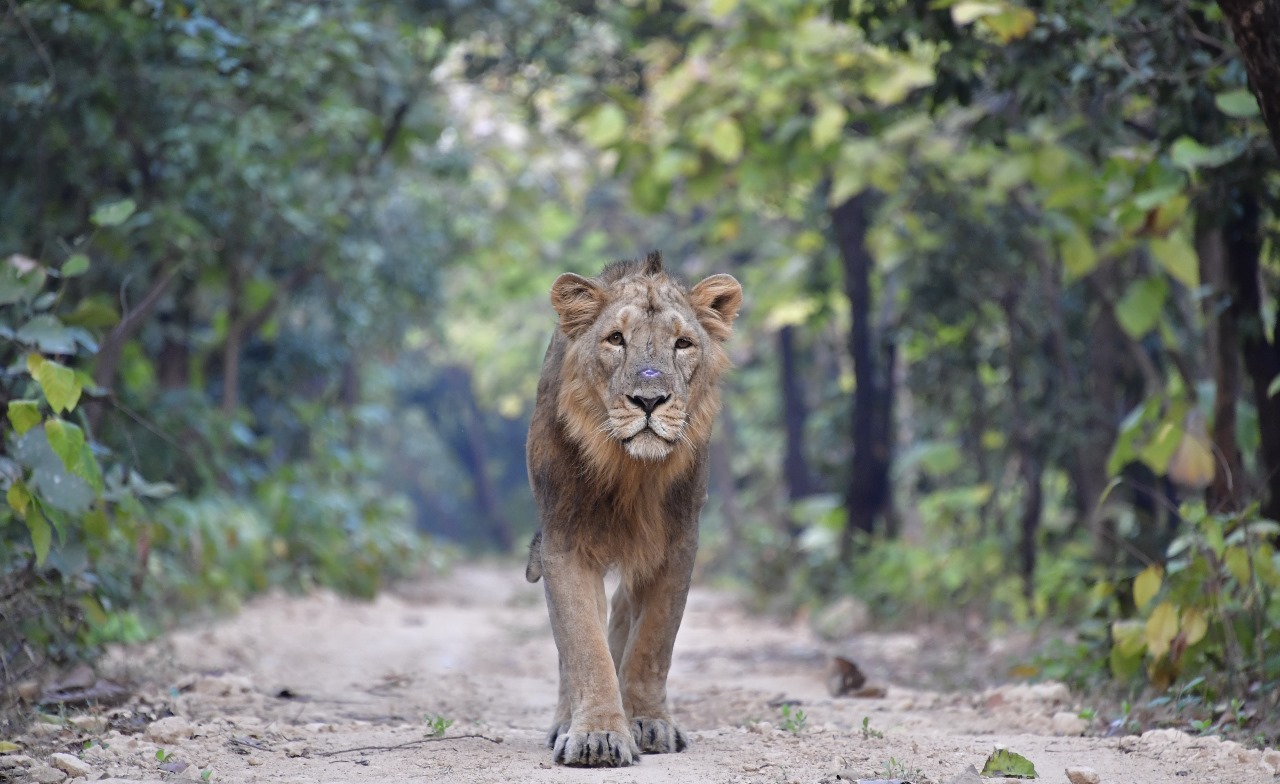16th Asiatic Lion Census to Cover 35,000 sq. km in 11 districts of Gujarat from May 10-13
April 21, 2025
Gir: Known by nicknames like Sinh, Savaj, Untiyo Vagh, Babbar Sher, Kesari, and Dalamattho, the Asiatic lion is found only in the Gir Sanctuary in the Saurashtra region of Gujarat. Since 1980, Gir has become famous as the only habitat of Asiatic lions. These lions are the pride of not only Gujarat but also all of Asia.
The Gujarat Forest Department conducts a lion census every five years. The next population estimate for the Asiatic lion, scheduled for 2025, will be conducted in two phases from May 10 to 13. The primary population estimate will take place from May 10 to 11, and the final population estimate will be from May 12 to 13. The census will cover a total area of 35,000 sq. km, spanning 58 talukas in 11 districts where lions reside. The estimation will use the ‘Direct Beat Verification’ method.
With the efforts to conserve Asiatic lions by establishing eco-development committees at the village level, appointing wildlife friends, organizing nature education camps regularly, monitoring and caring for the flora and fauna of Gir, and involving local people with skilled manpower, the lion population has steadily increased during each census.
The Asiatic lion has been included in the “Make in India” logo launched by the central government. In addition, the forest department has decided to increase the number of lion shelters, with the Barda Sanctuary being developed as an alternative shelter for lions since last year.
The first lion census in the state was conducted in 1936. According to the census data, a total of 304 lions, including adult males, females, cubs, and young lions, were recorded in 1995. This number grew to 327 in 2001, 359 in 2005, 411 in 2010, 523 in 2015, and 674 lions in 2020.
Direct Beat Verification Method:
The ‘Direct Beat Verification’ method is highly effective for estimating the population of Asiatic lions. This method provides nearly 100% accuracy due to its statistical simplicity, with a negligible margin of error. It has been in use for over three decades and works efficiently across forests, grasslands, coastal areas, and revenue regions.
The entire area will be divided into hierarchical units, such as Region, Zone, and Sub-Zone. Around 3,000 volunteers, including Regional, Zonal, and Sub-Zonal Officers, Enumerators, Assistant Enumerators, and Inspectors, will conduct the lion census. These volunteers will be provided with prescribed sheets and maps of their assigned areas to record and verify lion sightings. The sheets will include details like time of observation, direction of movement, sex, age, distinguishing marks on the body, GPS location, and group composition.
Use of Modern Technology:
Various technological tools, such as high-resolution cameras and camera traps, will be used to identify individual lions. Some lions have been fitted with radio collars, which will help track the lion’s location and group. The e-GujForest application will also assist with real-time data entry, improving accuracy and efficiency by including GPS coordinates and photos. Additionally, GIS software will be used to delineate survey areas and create detailed maps to track the lions’ movement, distribution patterns, and habitat usage, according to a press release from Gir Forest, Junagadh.
History of the Lion:
Thousands of years ago, the lion originated in Central Europe during the Ice Age. After the Ice Age ended and dense forests began to grow, the lion migrated towards South-East and North-West Asia. From there, it traveled to India from Palestine and Egypt, passing through Africa. Genetic studies show that the Asiatic and African lions diverged between 55,000 and 100,000 years ago.
Scientists believe that the lion entered India via the north-west route around 6,000 years ago. However, excavations at the Indus Valley Civilization sites near Sindh and Balochistan suggest that the lion may have entered the Indian subcontinent as early as 3 million years ago. Evidence indicates that, around 600 years before Jesus Christ, during the time of Buddha, the lion was present throughout the Indus-Gangetic plains. These plains stretched from Sindh in the west to Bengal in the east, from the foothills of the Himalayas in the north to the Narmada in the south.
It is difficult to determine exactly when the lion arrived in Saurashtra, Gujarat. Thousands of years ago, Saurashtra was surrounded by water on all sides, with the two Gulfs of Khambhat and Kutch, connected by shallow waters, resembling arms of the Arabian Sea. It is likely that, as the soil in these shallow waters aged and the Bhal and Nal lakes became saline, the lion entered Saurashtra through this route. The earliest indirect evidence comes from the time of Chandragupta II, who, after conquering the Shakas of Malwa and Kathiawar, had a lion hunting image engraved on his gold coins and established the famous Lion Vikram. DeshGujarat
Related Stories
Recent Stories
- India vs SL Match
- Free rides on AMTS buses for three days during Diwali
- 100 years of service to nation was our duty, so no celebration is needed: RSS Chief
- Commonwealth Sport Board Recommends Ahmedabad as Host City for 2030 Commonwealth Games
- Gujarat CM to visit Mumbai for listing of SMC's green municipal bonds on NSE



